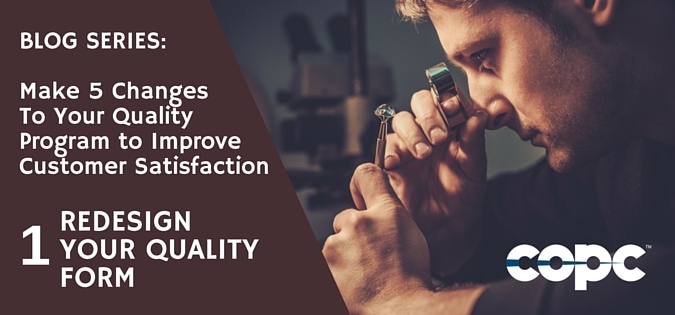
March 4, 2016
COPC Inc. Blog Series: Five Changes to Your Quality Program That Can Dramatically Improve Customer Satisfaction
Is your customer satisfaction (CSAT) not improving despite your best efforts? Does your company suffer a disconnect between your quality scores and your CSAT or issue resolution results? If so, rest assured you are not alone. More often than not, this is a sign that your quality program is not designed correctly and is not focused on the items that most impact your customer’s experience.
In our work with call centers and other customer experience operations throughout the world, we have found when quality programs are designed and functioning correctly, they can accurately predict the customer’s experience with your company. This allows you to be more proactive in fixing issues before they can impact your customer and your business.
To help your company improve the customer experience, we have developed a blog series called, “Five Changes to Your Quality Program That Can Dramatically Improve Customer Satisfaction.”
With each post in this series, we will examine one of five fundamental changes we recommend you make to your quality program. These are proven approaches to ensure your quality program is truly customer focused. Implementing these changes can drive significant improvements in the performance of your customer experience operations.
Here are the five changes:
#1. Redesign the quality form to align with key customer drivers
#2. Score only output metrics and use sub-attributes to capture reasons for error
#3. Measure quality using three metrics instead of one overall score
#4. Evaluate transactions from the customer’s perspective, focusing on systemic issues impacting performance
#5. Expand the quality process to include the capture of business intelligence
The focus of this installment is:
#1 Redesign the quality form to align with key customer drivers
When organizations think about how they initially developed their quality form, they realize that more often than not, it was built based on a collection of opinions and “must haves” from various stakeholders. While this approach might have given everyone a say, it probably did little to place the focus on what the customer is actually experiencing and their level of satisfaction.
We recommend a different approach to designing your quality form, one that puts the customer experience front and center. Start with an analysis of your customer satisfaction survey results. What are the key drivers of your customer experience? Which attributes most impact overall satisfaction?
For example, you might have “an appropriate greeting” as a part of your quality form, but does the customer satisfaction data confirm this is important to your customers? Probably not.
Analyze your data to determine the five to seven attributes essential to overall customer satisfaction. Typically, these attributes include issue resolution, agent knowledge, a desire to resolve, professionalism (not being rude) and handling the transaction efficiently–from the customer’s perspective. These should then be included on your quality form as customer-critical attributes, along with your business-critical attributes such as cost-related items, and compliance-critical attributes such as privacy/legal requirements.
By focusing solely on customer-critical attributes and eliminating items that have little to no impact on overall satisfaction, you will ensure a strong correlation between your quality scores and CSAT results. Once your form is truly customer-focused, your quality results will become more accurate and predictive. You can confidently rely upon your quality data to drive improvements in the customer experience.
______________________________________________________________________________
Please check back soon to see our next post in this series, when we will examine recommendations #2 and #3 about quality scoring and measurement. If you would like to discuss your quality form with a quality expert, contact us at info@copc.com.